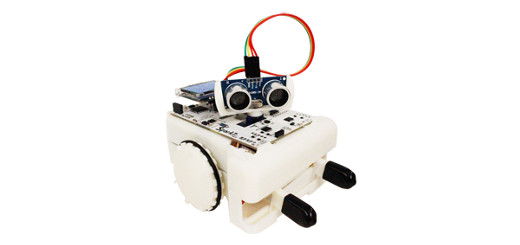Today’s latest “smart” homes getting outwitted by hackers
At least since George Jetson first came through his front door to be greeted by Rosie the robotic maid in 1962, the endlessly unpredictable wonders of the nebulous “Home of the Future” have held a unique status in our collective aspirations. Though Rosie herself may still be some way off, however, more and more American homes are integrating various forms of “smart” technology into everything from their refrigerators to their toilet seats.
From products as simple and easy to install as the highly popular Nest thermostat, which continuously extrapolates from manual adjustments to predict your likely desired temperature at any given time of day, to whole-home tech makeovers aimed at net zero energy consumption or centralized control of virtually every household appliance, the trend toward automation and networking in the home only seems to be gathering momentum.
Recently, however, the seemingly inevitable darker side of the rise of the “Internet of Things” – a term coined in 1999 intended to indicate physical objects virtually represented in an Internet-like structure and thereby remotely accessible – has begun to emerge as various vulnerabilities have been uncovered in the ever more complex systems operating our homes.
According to the Wall Street Journal, technology security consultants Daniel Crowley and David Bryan of Trustwave Holdings Inc. were scheduled to present this week at Black Hat, a prominent U.S. hacking conference in Las Vegas, on their work in uncovering network vulnerabilities in “smart” devices. Between them the two have successfully hacked multiple such systems, from a Samsung Smart TV to an automated toilet manufactured by Japanese firm Lixil Corp. to two home-networking devices – one since-discontinued product from Insteon, and the Veralite home controller from Mi Casa Verde, all using no more than their wits and an Internet connection.
As worrying as the idea of infiltration by professional hackers is, this brand of technological invasion doesn’t always require the level of computer skills one might encounter at Black Hat. This month, Forbes staff writer Kashmir Hill managed to take control of the electronics in multiple strangers’ homes through nothing more than a few Google searches. Each of these homes was outfitted with the same Insteon automation systems Crowley and Bryan had previously manipulated, and none of them was password-protected, meaning Hill could click her way directly into the ostensibly private online control screen homeowners use to monitor and manipulate their devices.
While the vulnerabilities Hill exploited may represent a fairly extreme case of design flaws meeting human error, her almost effortless success in gaining remote control over a stranger’s home, when paired with the more aggressive work of experts like Crowley and the potential for instantaneous dissemination of information about such weaknesses, sheds a harsh light on the need for increased awareness of electronic security on the parts of consumers and manufacturers alike.
[ image courtesy of Stuart Miles / FreeDigitalPhotos.net ]



